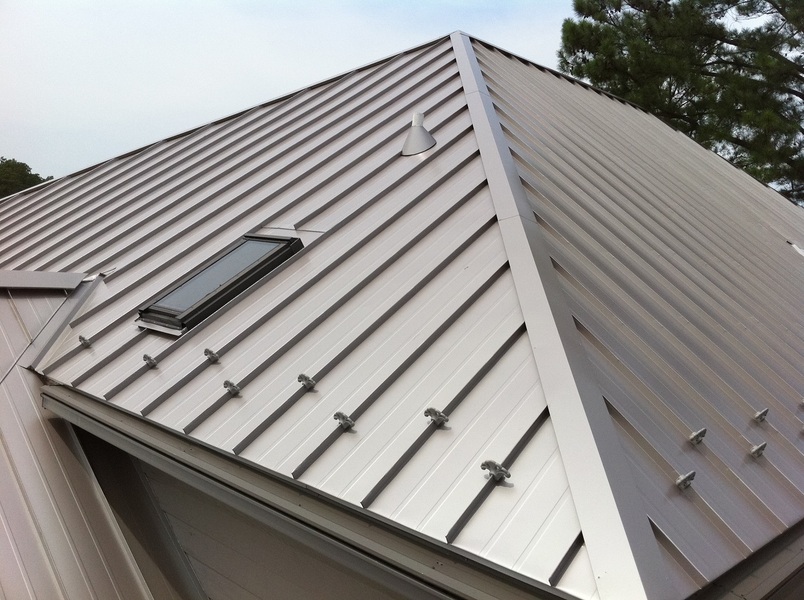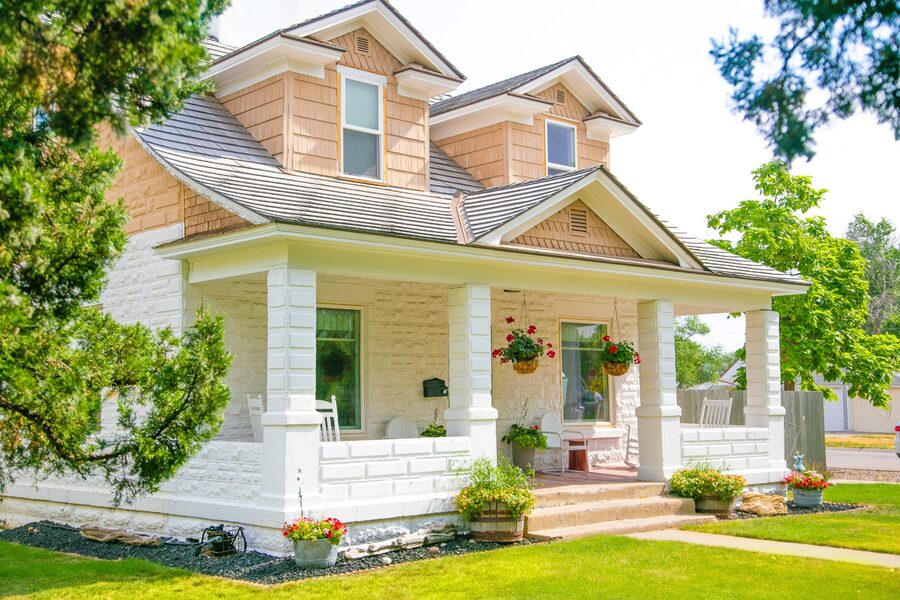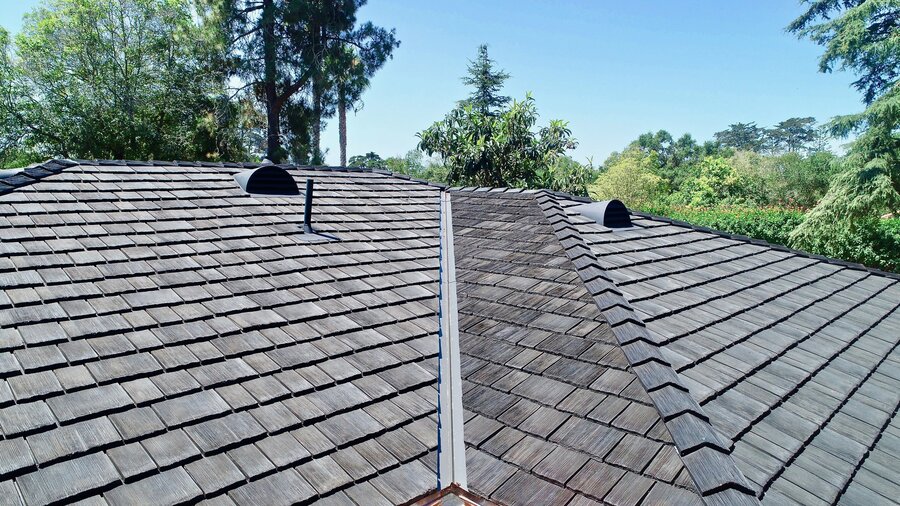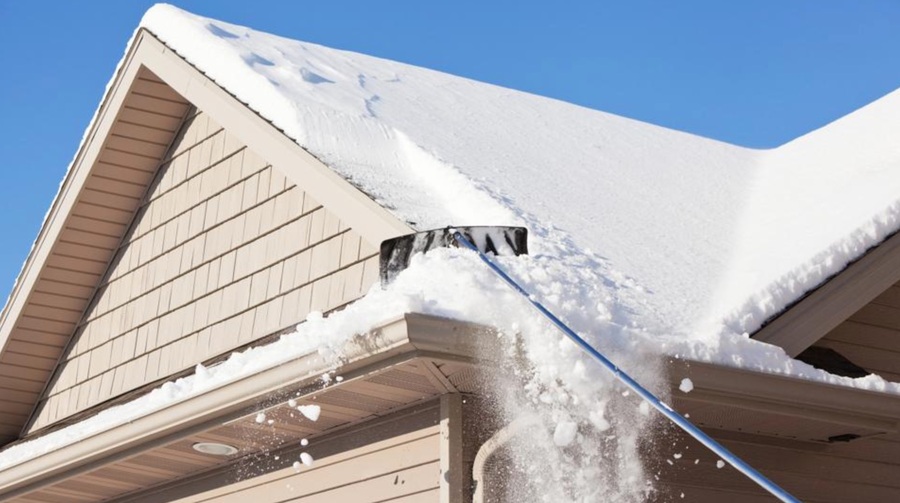Top Pros and Cons of Choosing a Metal Roof for Your Building
Top Pros and Cons of Choosing a Metal Roof for Your Building

When it comes to selecting the perfect roofing material for your building, there are several factors to consider. One popular option that has gained significant attention in recent years is metal roofing. Metal roofs offer numerous benefits but also have a few drawbacks. In this article, we will discuss the pros and cons of choosing a metal roof for your building, brought to you by Cedar Rapids Roofer.
Pros of Metal Roofing
Longevity and Durability: One of the primary advantages of metal roofing is its exceptional lifespan. Metal roofs are known for longevity, often lasting 50 years or more with proper maintenance. They can withstand harsh weather conditions, including heavy rain, snow, hail, and high winds, better than other roofing materials. Metal roofs are also resistant to fire, insects, and rot, making them ideal for long-term durability.
Energy Efficiency: Metal roofs are highly energy-efficient. They reflect solar radiant heat, reducing the cooling load of the building during hot summer months. This helps lower energy consumption and saves on cooling costs. Some metal roofs are also designed with insulation materials, further improving energy efficiency and thermal performance.
Environmentally Friendly: Metal roofs are considered eco-friendly due to their sustainability and recyclability. Most metal roofs are made from recycled materials and can be fully recycled at the end of their lifespan. Unlike other roofing materials that end up in landfills, metal roofs can be repurposed without creating a significant environmental impact.
Versatility in Design: Metal roofs offer a wide range of design options to suit different architectural styles and preferences. They are available in various profiles, colors, and finishes, allowing you to achieve a unique and aesthetically pleasing look for your building. Metal roofs can complement modern and traditional designs, providing flexibility and enhancing curb appeal.
Low Maintenance: Metal roofs require minimal maintenance compared to other roofing materials. They are resistant to mold, mildew, and moss, which are common issues with traditional roofing materials. Metal roofs do not crack, warp, or corrode easily, reducing the need for frequent repairs. Occasional inspections and basic cleaning are typically sufficient to keep them in good condition.
Cons of Metal Roofing
Initial Cost: One of the main disadvantages of metal roofing is the higher upfront cost compared to other roofing materials. The cost of materials, installation, and skilled labor can be substantial. However, it’s important to consider metal roofs’ long-term benefits and durability, which often outweigh the initial investment.
Noise Level: Metal roofs can be noisy during rain or hailstorms. Without proper insulation and underlayment, the sound of precipitation hitting the metal surface can be amplified, leading to potential disturbances inside the building. However, technological advancements have allowed insulation and underlayment materials that significantly reduce noise levels.
Expansion and Contraction: Metal roofs are susceptible to expansion and contraction due to temperature variations. This movement can potentially cause fasteners to loosen or damage the roofing system over time. However, proper installation techniques and expansion joints can help mitigate these issues.
Denting: Although metal roofs are generally durable, they can be susceptible to denting when exposed to heavy impacts, such as large hailstones or falling debris. However, most metal roofs are designed to withstand such impacts, and denting is often cosmetic and does not affect the roof’s functionality or performance.
Slippery Surface: Metal roofs can be slippery, especially when wet or covered with snow or ice. This can pose a safety risk for maintenance personnel or individuals accessing the roof. However, non-slip coatings or installing walkways and guardrails can address this concern effectively.
Choosing a metal roof for your building has numerous benefits, including longevity, energy efficiency, sustainability, and design versatility. While metal roofs have some drawbacks, such as the initial cost and potential noise issues, their long-term advantages make them a compelling option for many commercial and residential properties.
What are Some Other Roofing Materials for Homeowners?
While metal roofing offers several advantages, it’s important to consider other roofing materials. Different materials have their own unique characteristics and suitability for specific applications. Here are some popular roofing materials for homeowners to consider:
- Asphalt Shingles: Asphalt shingles are the most common roofing material used in residential properties. They are affordable, versatile, and available in a wide range of colors and styles. Asphalt shingles are relatively easy to install and provide good durability and weather resistance. However, they have a shorter lifespan compared to metal roofs, typically lasting around 20 to 30 years.
- Wood Shingles and Shakes: Wood shingles and shakes offer homes a natural and rustic aesthetic. They are typically made from cedar, redwood, or pine and provide excellent insulation. Wood roofs are durable and can last 30 to 50 years with proper maintenance. However, they require regular maintenance to prevent rot, mold, and insect infestations. Additionally, some areas have restrictions on wood roofing materials due to fire safety concerns.
- Clay or Concrete Tiles: Clay or concrete tiles are popular in areas with a Mediterranean or Spanish architectural style. They provide a distinctive and elegant look to homes. Tile roofs are highly durable, lasting up to 50 years or more. They are resistant to fire, insects, and rot. However, they are heavy and require a strong roofing structure to support their weight. Tile roofs can be more expensive and may require additional maintenance to address cracked or broken tiles.
- Slate: Slate roofs are known for their timeless beauty and exceptional longevity. They can last for over a century when adequately maintained. Slate is a natural stone material that is resistant to fire, rot, and insects. It offers excellent durability and requires minimal maintenance. However, slate roofs are expensive to install due to the high cost of materials and the specialized skills required for installation. They are also heavy and require a sturdy roof structure.
- Synthetic Roofing Materials: Synthetic roofing materials, such as synthetic slate or rubber shingles, provide an affordable alternative to natural materials. They mimic the appearance of traditional roofing materials while offering enhanced durability, lightweight properties, and ease of installation. Synthetic materials are often more resistant to damage from weather and impacts. They are also more cost-effective compared to natural materials, making them a popular choice for homeowners seeking a balance between aesthetics and affordability.
- Metal Roofing Options: In addition to traditional metal roofs, homeowners can also consider other metal roofing options, such as corrugated metal panels, metal shingles, or standing seam roofs. These variations offer different appearances and installation methods, catering to various architectural styles and preferences. Each type of metal roofing has its own unique advantages and considerations, so it’s essential to consult with a roofing professional to determine the best option for your specific needs.
When selecting a roofing material, it’s important to consider factors such as budget, climate, architectural style, durability, and maintenance requirements. Consulting with a reputable roofing contractor like Cedar Rapids Roofer can help homeowners make informed decisions based on their unique circumstances and preferences.
Consulting with a professional roofing contractor like Cedar Rapids Roofer can help you determine if a metal roof is suitable for your specific needs and budget.
Key Takeaways
- Metal roofing offers longevity, durability, energy efficiency, and design versatility.
- Metal roofs are environmentally friendly and require low maintenance.
- Initial cost and potential noise issues are the main drawbacks of metal roofing.
- Home roofing materials include asphalt shingles, wood shingles, clay or concrete tiles, slate, synthetic materials, and various metal roofing options.
- Each roofing material has its own characteristics, costs, and maintenance requirements.





